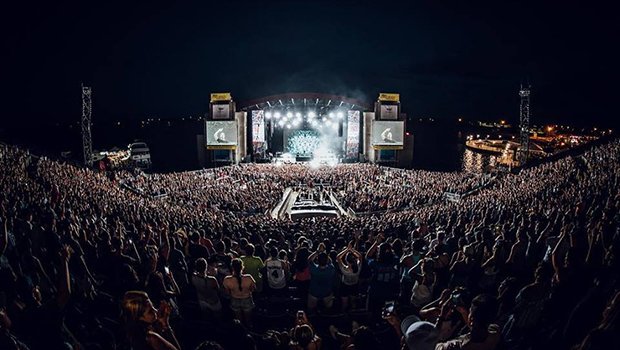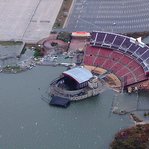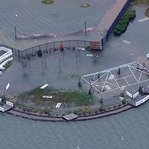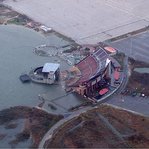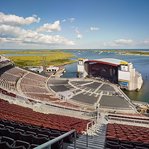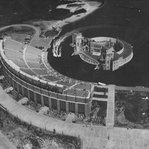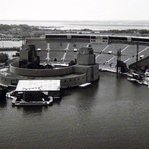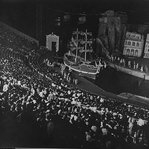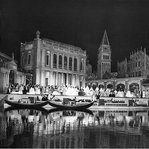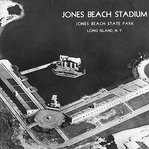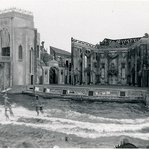What’s the best place to see a concert on Long Island? The top of almost every native Long Islander’s list is usually Jones Beach Theater. Nothing compares to the experience at Jones Beach. A summer night. On the water. Sun going down. An explosion of music.
But did you know that the original theater was wooden and built in the 1930s? It was condemned and replaced in 1952 with the modern theater by Robert Moses, which was expanded and renovated over the years.
Below we compiled some crazy and historical facts about Jones Beach Theater.
The Original Jones Beach Marine Stadium 1930's
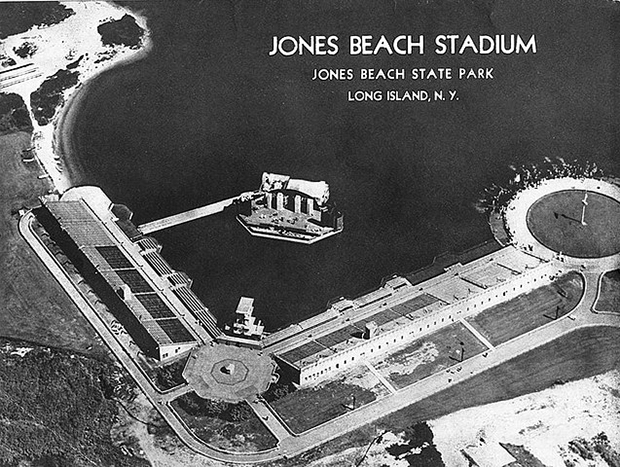
Photo: Jones Beach Facebook page.
Jones Beach Marine Theatre construction, June 12, 1951
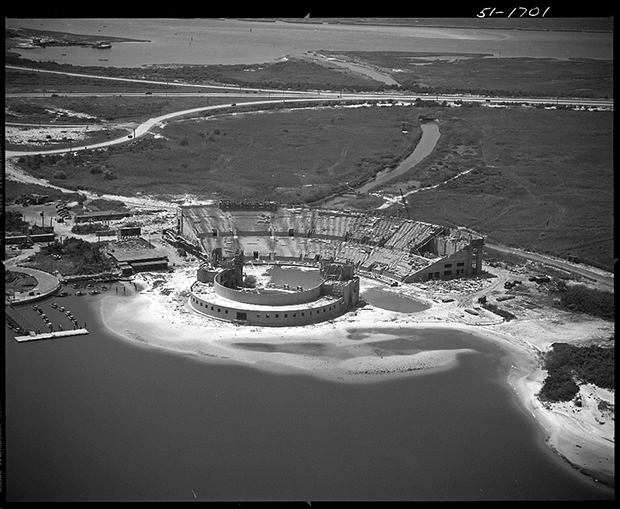
Photo: Jones Beach Facebook page.
Jones Beach Marine Stadium
- The original theater was a wooden structure built in the early 1930s as a work relief project
- According to the Long Island Music Hall of Fame, the original theater was called Jones Beach Marine Stadium
- It was also sometimes known as Zach's Bay Stadium
- The theater was taken down in 1945 because it was deemed unsafe as a result of damaging storms and a hurricane
- Jones Beach Marine Theater was rebuilt in 1952
- According to a newspaper article from 1952, the theater cost $4 million ($43.5 million in 2020 dollars) to build
- Jones Beach Theater is located on Zach’s Bay at Jones Beach
- The original capacity was 8,300 seats
- The theater was designed to specifications from Robert Moses
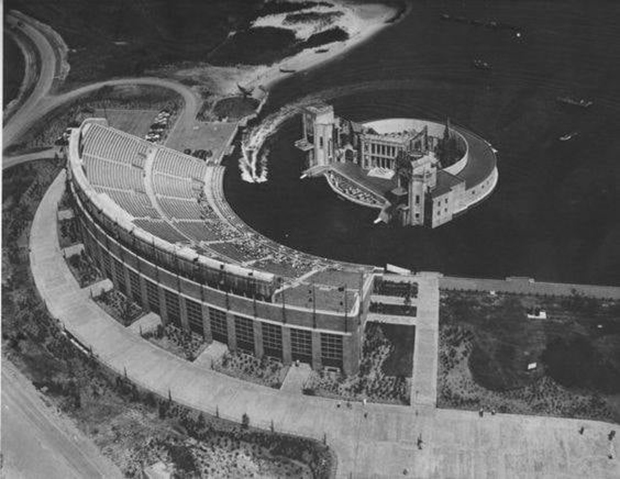
Photo: Jones Beach Facebook page.
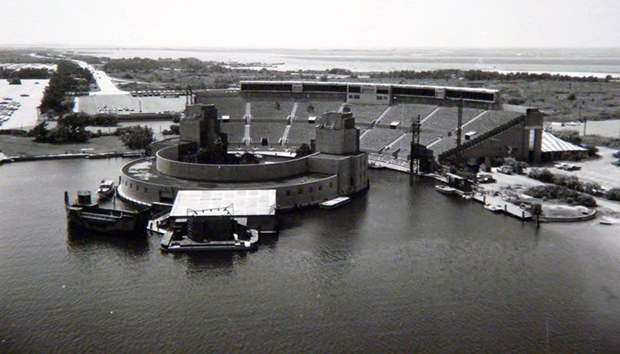
Photo: Jones Beach Facebook page.

Photo: Jones Beach Facebook page.
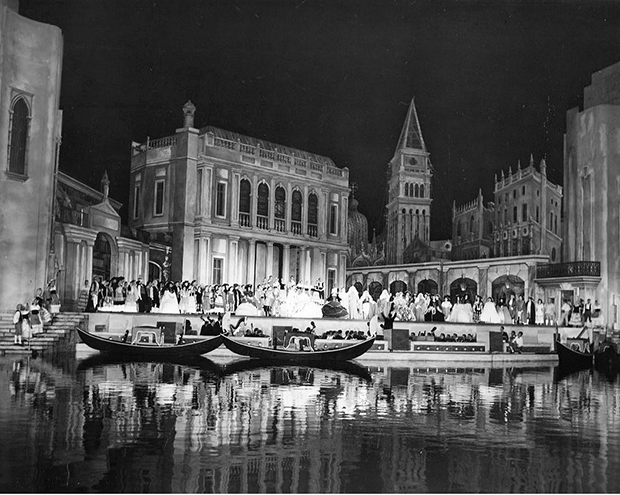
Photo: Jones Beach Facebook page.
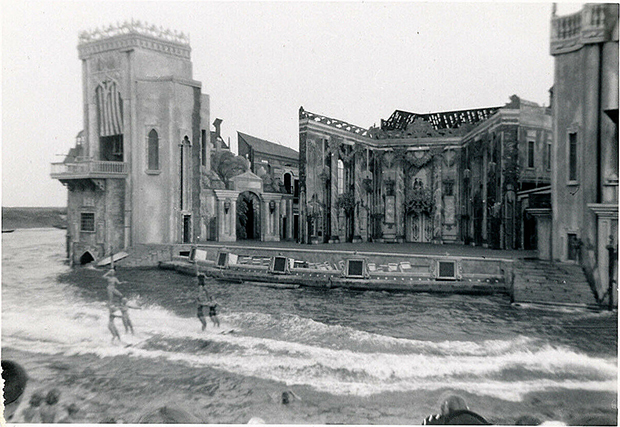
Photo: Jones Beach Facebook page.
Musical Beginnings
- In 1952, the theater opened with a performance of Johann Strauss’ operetta A Night in Venice
- The performace featured a set with five story high towers, ninety four floodlights, a 76-foot revolving stage, and a fireworks show
- The sets and cast were said to be four times larger than some of Broadway’s plays
- The original theater’s stage was surrounded by a moat and performers accessed the stage from an underwater tunnel
- Up to the 1980s the venue mostly hosted musical shows
- The productions were usually a whole season long
- Shows produced at the theater included Show Boat (1956-57), Around The World in 80 Days (nd
- 1963-64), South Pacific (1968-69), The Sound of Music (1970-71), The King And I (1972), Fiddler on the Roof (1974), Annie Get Your Gun (1978), and Damn Yankees (1981)

Photo: Jones Beach Facebook page.
Modern Era
- In the 1980s the theater began focusing on concerts
- Jimmy Buffet has performed at Jones beach Theater 30 times
- In the 1980s, wood plank decking was built over the bay
- The wood floor was later replaced in late 1980s with pitched concrete flooring and seating
- In 1992 the theater was rennovated and capacity was increased to 11,200 seats
- The seating capacity was then increased to 15,200
- Tommy Hilfiger, Nikon and Northwell Health have all had naming rights to the theater
- In 2010, a small Bay Stage was opened with a capacity of 5,000
- The Bay Stage was located behind the concession stands
- The focus of The Bay Stage was on acts that prefer playing general admission shows and “developing acts and package tours that are too big for New York ballrooms but not big enough for arenas”
- At this time, no acts are scheduled for The Bay Stage
- At one time, a no-alcohol policy was put in place except in designated areas
- That changed in 2014, when alcohol was available for sale to the general public during certain shows
- That was expanded in 2015 when alcohol was available for sale at most shows
- More than 20 million visitors have visited Jones Beach Theater to date
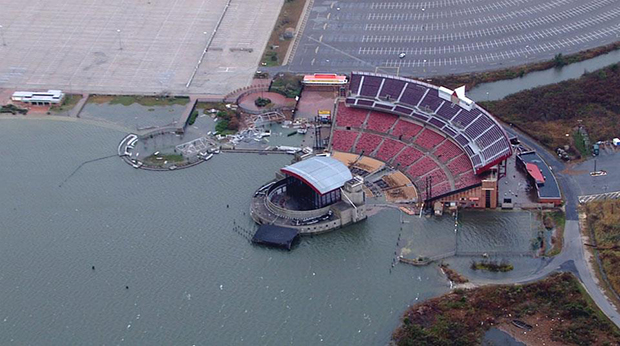
Photo: Jones Beach Facebook page (2012)
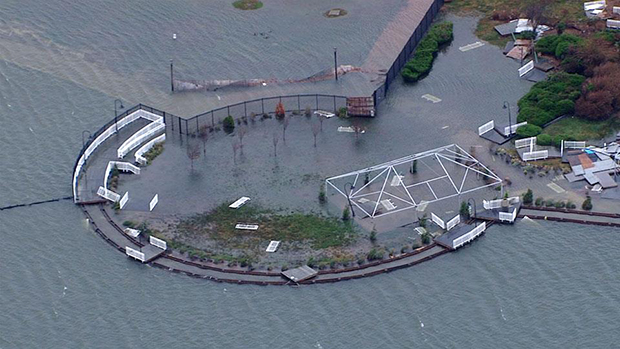
Photo: Jones Beach Facebook page (2012)
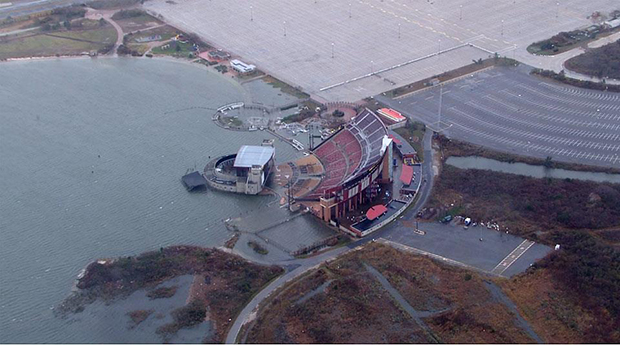
Photo: Jones Beach Facebook page (2012)
Superstorm Sandy
- In 2012, Superstorm Sandy caused severe damage to the theater
- After Superstorm Sandy, reconstruction cost more than $20 million
- Construction encompassed more than 100,000 work hours
- Over three million gallons of sea water were pumped out of the venue
- At the time, Patch reported that “the main orchestra was flooded almost three quarters of the way up and a lot of debris has deposited. The tunnel that connects the front stage to the back stage was also flooded nearly to the ceiling”
Want more crazy facts? Click here to read Crazy Facts About Smith Point Beach!










